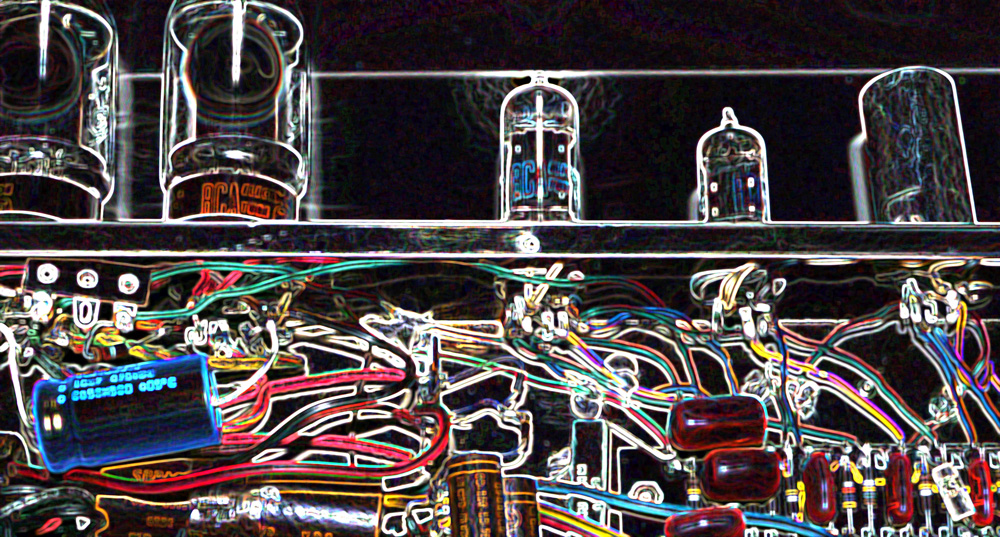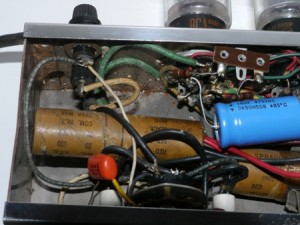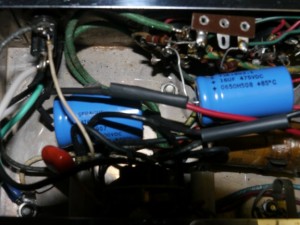DISCLAIMER – The repairs mentioned on this site are from personal experiences. Please do not take any information here and think you’re equipped to work on your amp. I’m told there are some things in there that can retain enough voltage to kill or seriously hurt you. I take my own chances….you take yours.
The round paper tubes that look like a roll of pennies are the old electrolytic capacitors. The crud yousee in the upper left of the case looks like where the liquid contents of a blown or previously blown capacitor sprayed the inside of the amp. It looked at first as if it was all rust but some of it rubbed right off. Avoid touching the capacitors….take great care because they can store a charge well after the amplifier is turned off and unplugged. I probed them for DC current and they had been discharged. The blue capacitor to the right was a modern replacement for the one that was obviously blown. I found of the same value, and soldered it in. Turns out the other large capacitor you see in the photo below was also blown. This one had leads coming out one side and looked like a firecracker with fuses. I had trouble finding one with the same electronic value and the same design so I settled with one of a similar value and added a length of wire in order to connect to the same locations. Also notice the old wiring coming in from the fuse….this was an 2 prong ungrounded chord and in a later post I’ve also decided to upgrade that to 3-prong.
In the photo above you can see both new capacitors in place. The new capacitor is smaller in length but is a little stubby compared to the one it replaced. You can see the wire snaked over from the left side and covered with some heatsrhink tubing. You may also spot the new power chord with the green grounded wire. I plugged the amp in and for the first time in a long time it did not immediately blow the main fuse. The Standby circuit seemed to work fine and it’s pilot light was glowing instead of flickering. That seemed like progress. Once the tubes seemed warm I moved the switch to “ON” and amost immediately I got a terrible low frequency rumble that threatened to blow out the speakers. It seemed unaffected by the volume controls…so I shut down the amp immediately. Experimenting a bit…I was able to get the amp to play while the tubes reahced operating temperature. This still felt like progress because at least I was not blowing the fuse and I was getting a nice sound…but as soon as the tubes warmed up….Deep Rumble again!! While fiddling around with plugging the guitar in one of the four inputs I also discovered that there was a short in one. That will be mentioned in a future post.


